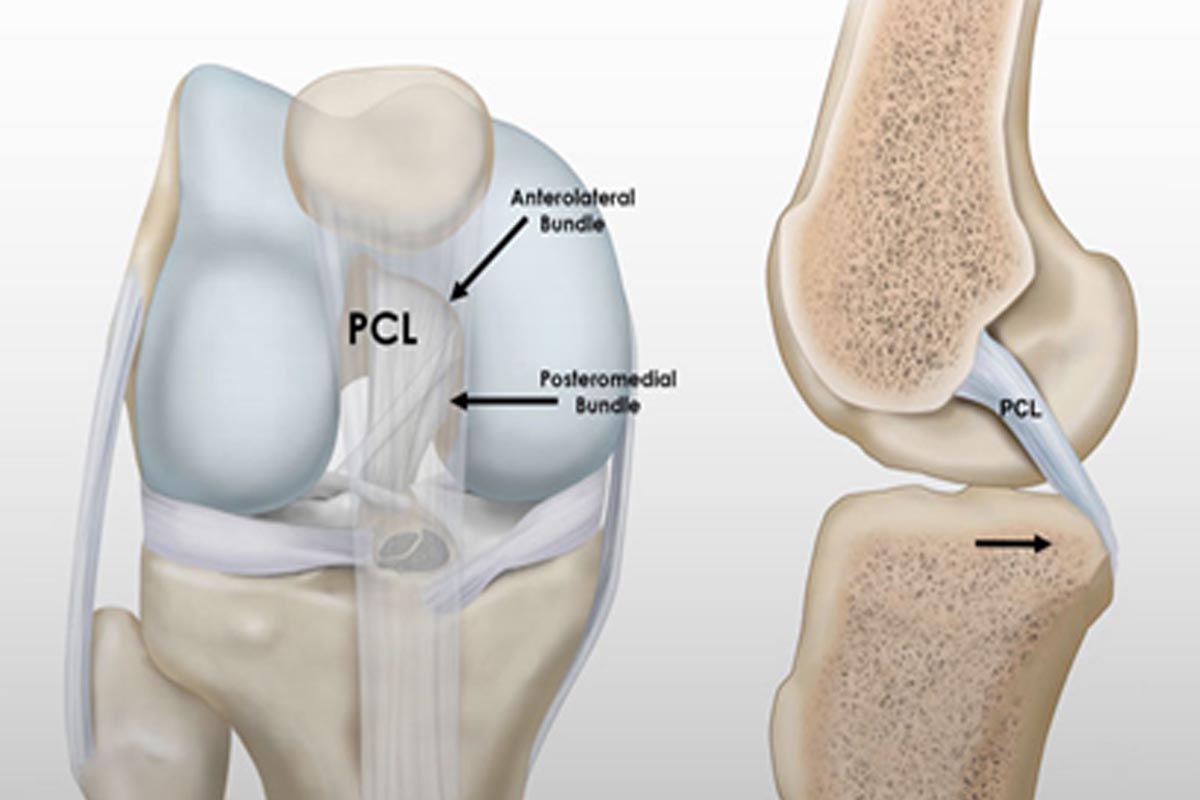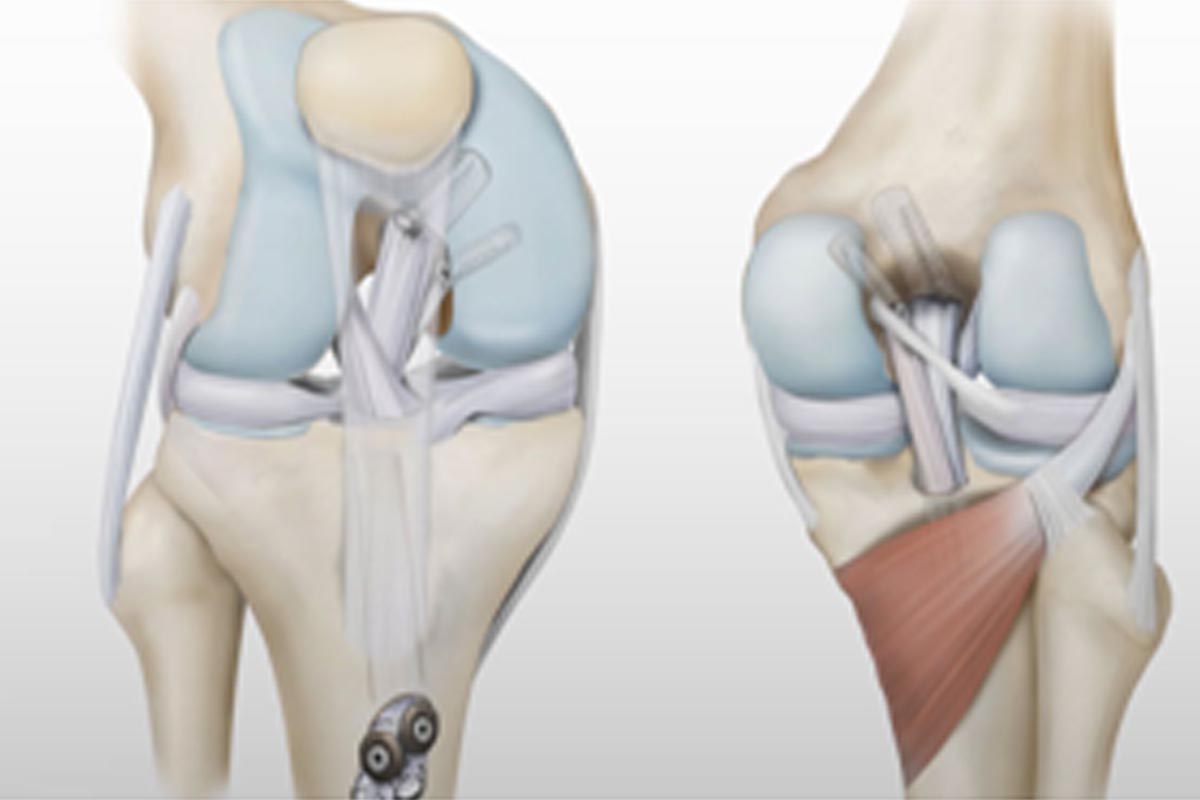Posterior cruciate ligament reconstruction

Posterior cruciate ligament reconstruction
The posterior cruciate ligament (PCL) is the largest and strongest ligament in the knee. It has two very distinct portions: one that goes from the back of the shinbone (tibia) to the roof of the femoral notch (in the thigh bone) called the anterolateral bundle, and a second smaller portion that goes to the side of the notch called the posteromedial bundle. Both bundles prevent the knee from slipping backward, especially when it is bent. However, as they have different attachments, they have different primary functions. The anterolateral bundle prevents excessive front-to-back motion of the shin bone (tibia) while the posteromedial bundle prevents excessive rotation of the tibia. Because they have different functions, it is necessary to reconstruct both bundles when the PCL is torn
How do PCL injuries occur?
Given the posterior cruciate ligament’s size and strength, it takes a significantly traumatic injury to tear it. Consequently, most torn PCL’s occur combined with other ligament injuries. A PCL tear by itself, called an isolated PCL tear, is not that common and is instead usually associated with other ligamentous injuries (MCL, LCL or ACL). Most isolated PCL tears occur as a result of an injury to the front of the knee when it is bent. Falling on a bent knee while playing sports, slipping on ice, or hitting a dashboard during a traffic accident are some common ways that the PCL is torn.

Symptoms
Pain. Mild to moderate pain in the knee can cause a slight limp or difficulty walking.
Swelling. Knee swelling occurs rapidly, within hours of the injury.Instability. Your knee might feel loose, as if it’s going to give way
What is the treatment for a PCL injury?
If the patient only has a posterior cruciate ligament injury, a conservative treatment can be attempted for partial tears (grade I and II). The conservative approach involves rest, ice, analgesics physical therapy, and a brace. Physical therapy for a posterior cruciate ligament injury is somewhat more restrictive than for an ACL injury (as higher degrees of flexion (bending) can stress the PCL) and are focused on quadriceps muscle activation while avoiding hamstring activation. Too much activity from the hamstrings will pull the tibia (shin bone) backwards which can stretch the healing of the posterior cruciate ligament. For this reason, a brace is usually needed. It is important for you to understand the reason for wearing a brace, because they are usually much bigger and, unfortunately, more uncomfortable than other knee braces.
For patients with combined ligamentous injury, chronic cases, or those that remain symptomatic despite the conservative treatment, surgery is recommended. posterior cruciate ligament surgery is similar to ACL surgery in that it involves drilling tunnels into your shin and thigh bones (tibia and femur) and fixing a graft into those tunnels. The hamstring tendon auto- and allografts are most often used.

How long is the recovery?
Depending on the severity of the injury and other associated ligament injuries, recovery can be between 4 – 6 months. Physical therapy starts on day 1 to work on range of motion. Patients should not bear weight (or very little weight) for the first six weeks after injury or surgery. After this initial period, they may wean off from crutches when they can walk without a limp. Patients can usually return to driving two to three weeks after they are able to walk. Endurance and strengthening can be started in the second phase of rehabilitation. Agility exercises start at 4 months along with the running progression if previous stages have been successfully completed. Although return to sports is different between patients, it should be allowed at approximately 6 – 9 months.
